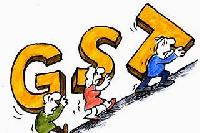
One of the major remaining areas of tax reform in India is to unify the country’s tax system especially in indirect taxes. Indirect taxes are taxes on goods and services. In India, the indirect taxes are imposed by both centre and the states. Centre’s union excise duties (CENVAT), customs duties and service taxes and states’ sales tax (state VAT) and the state excise duties are the major indirect taxes in India. Besides these, there other small indirect taxes as well.
What is Goods and Service Tax?
The Goods and Services Tax, or GST is a major indirect tax reform to be introduced in India by integrating the major indirect taxes of the centre and states. It will be a comprehensive tax levied on the manufacture, sale, and consumption of goods and services. The GST will be “collected on value-added goods and services” at each transactional stage of the supply chain or process. GST as a reform measure was first introduced in the 2007-08 budget. A major positive feature of GST is that it is a value added taxation model. Already many foreign countries have adopted GST based VAT systems.
GST belongs to the VAT family as tax revenues are collected on the basis of value added. Unlike in the case of a pure commodity based VAT system, GST includes services also. Similarly, input credit is given while calculating the tax burden. This means that basic inputs will not be taxed.
Why GST is a necessity?
A major problem regarding the present indirect tax system is that it is badly administered between the centre and states with overlapping tax burden, multiple rates and thus discouraging economic activities. A simple and clear tax system at the same time unified and better organized is helpful to promote economic activities like investment, production and consumption.
Different types of indirect taxes scattered among goods and services, administered by centre and states are blocking a unified tax regime in the country.
In the absence of an integrated indirect tax system, taxes are burdensome and there exists many taxes that look illogical like the Central Sales Taxes. Similarly, the problem of tax on tax or cost cascading effect is increasing the tax burden for the buyers
Hence a move towards a unified tax system is a necessity and it is for that purpose that the government has decided to introduce the Goods and Service Tax.
The GST will replace the multi-layer tax scheme and instead will create a unified market with a more integrated tax regime having a central goods and service tax (CGST) and a state goods and service tax (SGST).
In the proposed GST system, both under Central and State GST, tax cost would essentially be incurred on final consumption only. As a consequence, revenues will effectively accrue to the State where consumption takes place. In this respect, the GST would be a destination based tax as against the present concept of origin based tax.
*********









